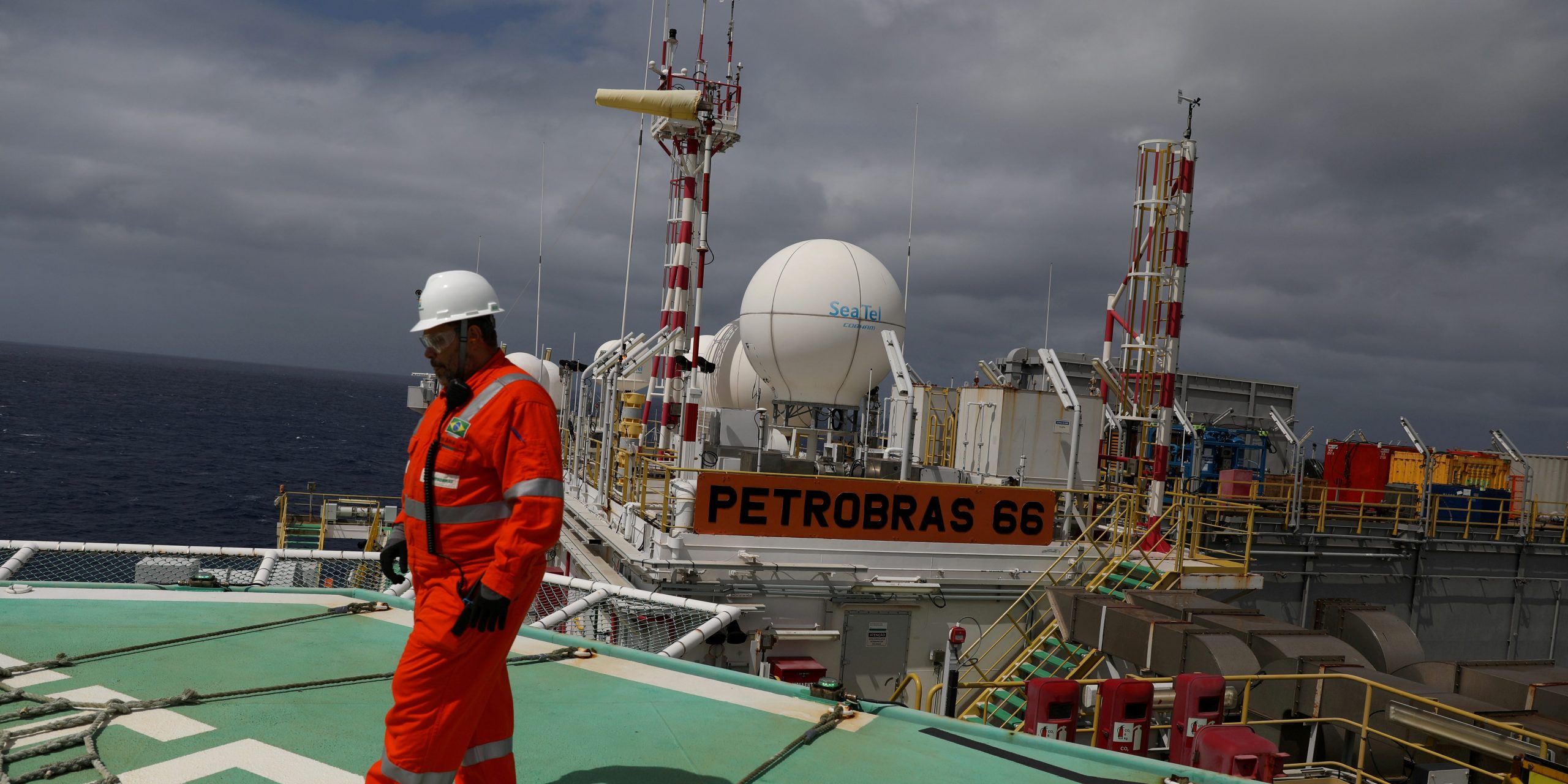
Reuters
- Short-term futures contracts on oil are currently worth less than long-term contracts, a market structure known as "contango".
- This reflects a belief among traders that supply will outpace demand and depress the oil price.
- Europe is dealing with a third wave of COVID-19, which could impact energy demand.
- Sign up here for our daily newsletter, 10 Things Before the Opening Bell.
A key indicator of sentiment in the oil market has turned negative for the first time since the start of the year, as a threatened third wave of COVID-19 has taken some of the shine off the more optimistic forecasts for a recovery in energy demand.
The crude price has fallen by nearly 4% this week, set for its third consecutive weekly decline, as a rise in cases of COVID-19 in Europe, in particular, has triggered another round of lockdowns and restrictions. These have, in turn, sparked concern that a much-vaunted recovery in energy demand might not happen as quickly as some had expected.
Brent crude prices were around $61 per barrel on Thursday, down 4% on the day and nearly 15% below 14-month highs earlier this month.
The Brent crude futures market, the most widely traded, shows traders are preparing for consumption to slow. The price of crude for near-term delivery has fallen below those futures contracts for delivery at a later date. This structure is known as "contango" and reflects an expectation that demand is falling behind supply right now, which weakens the oil price.
The opposite structure – known as "backwardation" – reflects a belief among traders that supply is falling short of demand. This phenomenon has prevailed pretty much since November, when the release of effective COVID-19 vaccines unleashed a burst of optimism about the path back to more normal economic activity.
The difference, or spread, between the benchmark Brent crude contract, for delivery in a month's time, and the contract for delivery in two months' time, was last at a premium of just 17 cents, having flipped to a discount, or backwardation, of 7 cents the previous day. It hasn't traded consistently at a discount since late November.
The third wave of Covid-19 washing across Europe may impact energy demand as the return to normal life is slowed down. The largest European oil consumer, Germany, has extended its lockdown and measures may be tightened, which would likely impact sectors such as travel, which are inherently linked to oil.
"The extended lockdowns in Europe are not going away very soon and as Easter season is ahead of us, there is extra concern that infection rates may rise further," Bjornar Tonhaugen, Rystad Energy's Head of Oil Markets said in a note on Wednesday.
"If lockdowns continue for long, it is almost certain that oil demand will not recover as quickly as though in the beginning of the year. Lower-than-expected oil demand of course means that oil prices will take a hit and that is what traders have been pricing in recently," he said.
The oil price rose by as much as 4% on Wednesday, getting some respite from the recent weakness, after the blockage of the Suez Canal by a container ship that had run aground. But, by Thursday, this short burst of strength had fizzled out.
"The futures market got ahead of itself, pricing in the expected demand recovery. So, the result is sentiment catching down to reality," Axi trader chief market strategist Stephen Innes said.
The OPEC+ group of exporters, led by Saudi Arabia and Russia, will meet on April 1st to discuss their joint oil production cuts, which may also influence the price. But analysts said they saw little likelihood of the group agreeing to increase their crude output.
"I would rate the chances of a further unwinding of production cuts by OPEC+ or Saudi Arabia as zero at this stage." Jeffrey Halley, senior market analyst at OANDA, said in a note on Wednesday.